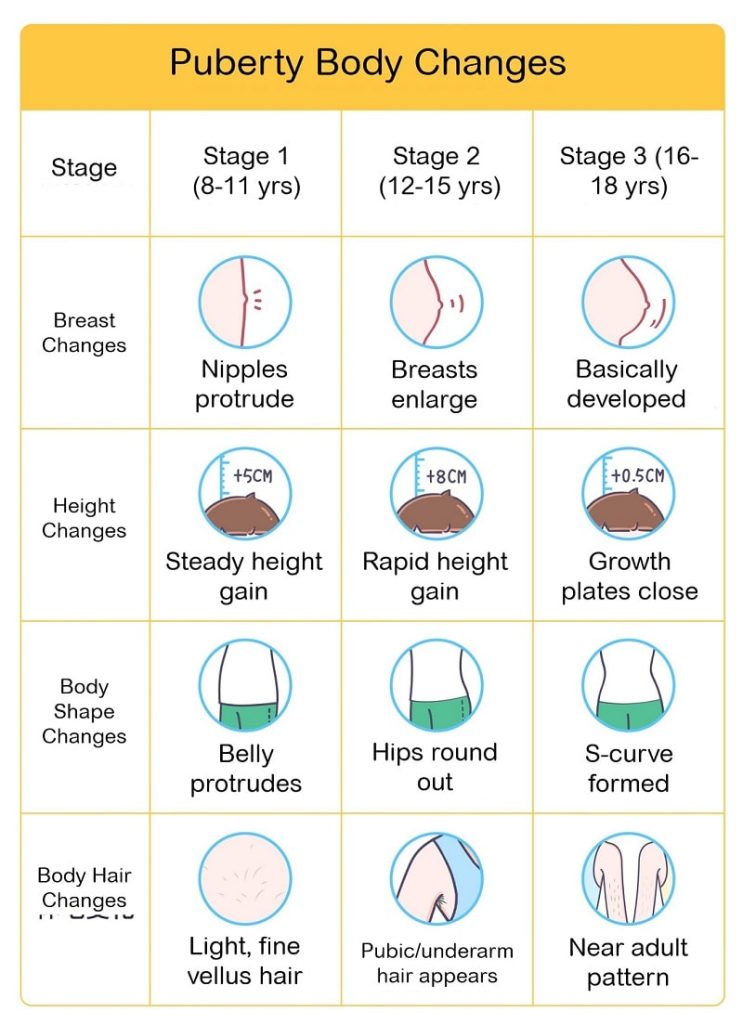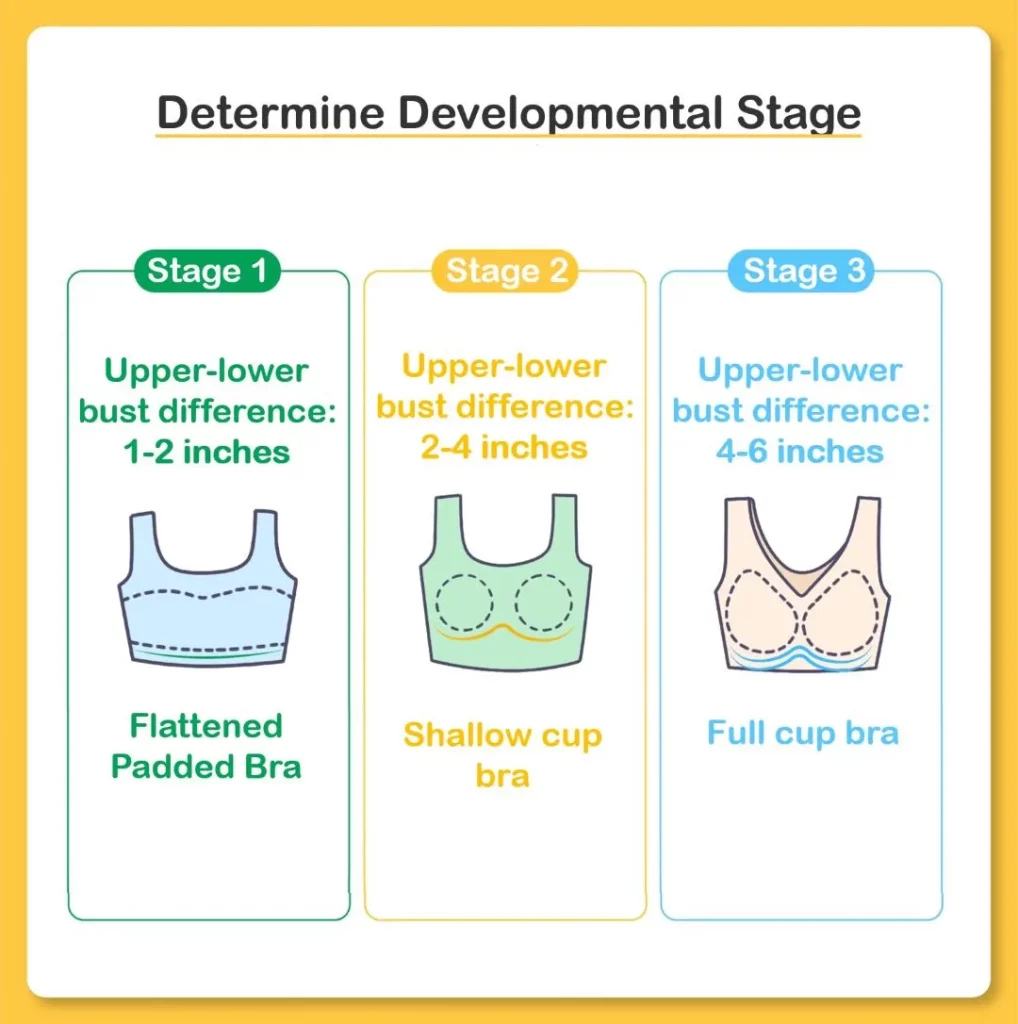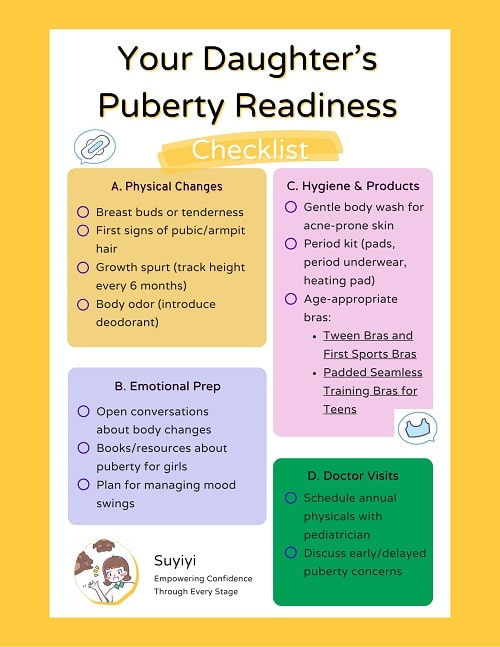Puberty is a journey-one that starts earlier than many moms expect and brings a wide range of physical, emotional, and psychological changes that can feel overwhelming. At Suyiyi, we believe knowledge is power. This guide combines expert advice with real-mom wisdom to help you navigate puberty for girls, including breast development, the onset of puberty, first periods, acne, moodiness, and more. Whether your daughter is age 9 or 13, you’ll find stage-specific advice, age-appropriate tips, and confidence-boosting solutions here.

1. Understanding Puberty: What Every Mom Needs to Know
Puberty now typically starts between ages 8 and 13, but some girls may start puberty as early as age 7 or as late as 14. The average age for the onset of puberty is now around age 9 to 11.9, and it’s completely normal for girls to start earlier or later than their peers. Early puberty (also called precocious puberty) and delayed puberty (late bloomers) are part of the normal process but should be discussed with a pediatrician if you have concerns.
Hormonal changes, including an increase in the production of estrogen and other hormone levels, drive changes in both body and brain, preparing girls to go through puberty. These hormonal shifts can also cause moodiness and emotional and psychological changes.
-
Learn more about the first signs of puberty and understand when girls start puberty.
2. Physical Changes: From Breast Buds to First Periods
Breast Development Stages
The first stage of puberty in girls is usually the development of tender lumps called breast buds, often appearing between ages 8 and 11. This is followed by a growth spurt, an increase in height, and the appearance of body hair, including pubic hair in the pubic area and inner thighs, as well as armpit hair. The areola (the area around the nipple) may also change. Body odor often increases, so this is a great time to introduce hygiene routines like deodorant or antiperspirants.
-
Track your daughter’s progress with our detailed changing stages of breasts guide.
-
If your daughter experiences breast pain during puberty, read our breast pain during puberty guide.

First Period Preparation
The onset of menstruation (menarche) typically follows 2–3 years after breast buds appear, usually around age 11.9. The menstrual cycle may be irregular at first, and it’s important to discuss menstrual hygiene, including how to use pads, period underwear, and when she’s ready, a tampon. Remind her that changes are normal, and that menstruation is a normal process for all teen girls.
-
Prepare by reviewing what to expect on first period, including signs, symptoms, and product options.
-
Build a period kit with pads, period underwear, deodorant, and heating pads to help your daughter feel ready.
3. Emotional Support: Navigating Mood Swings & Self-Esteem
Hormonal shifts during puberty can cause moodiness, increased sensitivity, and emotional ups and downs. Acne and body changes may affect self-esteem, especially as girls compare themselves to beauty standards or other teen girls. Mood swings and new feelings are common as hormone levels fluctuate.
-
Help your daughter by managing puberty emotions and fostering a positive body image.
-
Start open conversations using our how to talk to your daughter about puberty guide to build trust and understanding.
-
Encourage annual physicals with a pediatrician to check for any concerns, especially if you notice signs of puberty early (precocious puberty) or if puberty seems delayed.
4. Suyiyi’s Stage-Based Approach: Bras for Every Phase
We design bras to match your daughter’s unique stage of puberty and changing body:
| Stage of Puberty | Suyiyi Solution | Key Features |
|---|---|---|
| Stage 1 (8–11) | Tween Bras | Seamless, tagless, breathable cotton for tender lumps and early breast buds |
| Stage 2 (12–15) | Teen Training Bras | Wide straps, moisture-wicking fabric for growth spurts, active tweens, and body changes |
| Stage 3 (16–18) | Pain-Free Support Activewear | Encapsulation cups, adjustable bands for mature breasts, menstruation, and sports |
-
Find the perfect fit by exploring our first bra guide and size guide.

Ready to Support Your Daughter?
Explore Suyiyi’s Stage-Based Bras → Find Her Perfect Fit

Download Our Free Puberty Checklist → Never Miss a Milestone

